Pets bring joy, companionship, and much love into our homes. However, with their presence comes the responsibility of maintaining designated areas where they eat, sleep, and play. A clean and organized pet space is crucial for your pet’s well-being and contributes to the overall cleanliness of your home. Let’s explore some practical tips to help you achieve and maintain a pristine environment for your furry friend.
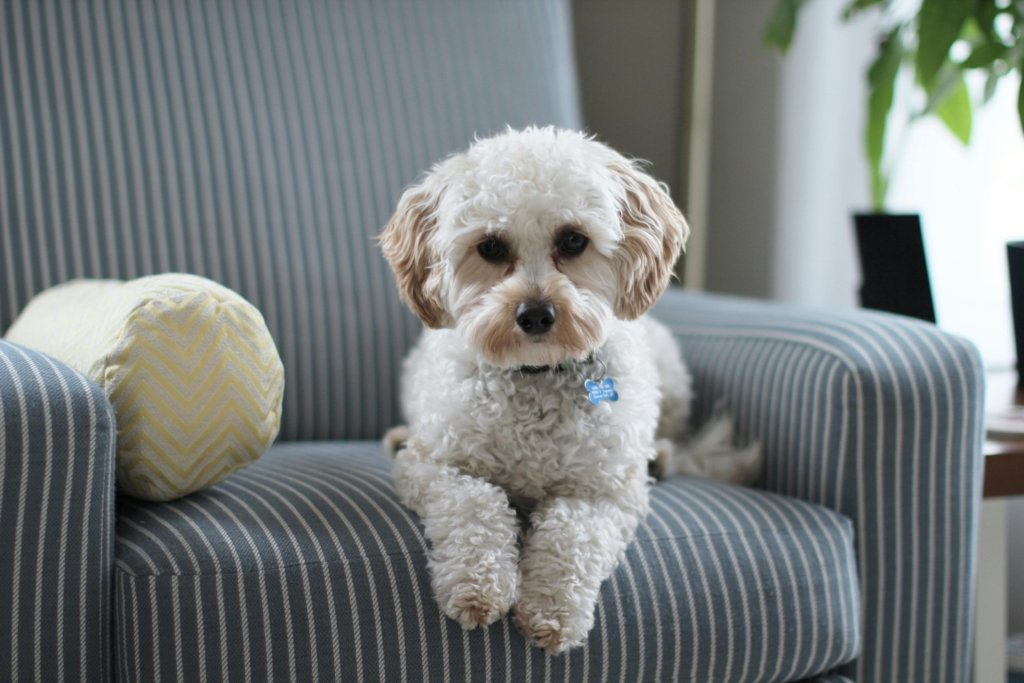
Designate Specific Areas
Creating a sense of order begins with designating specific areas in your home for your pet’s activities. Establish separate zones for eating, sleeping, and playing. This not only helps in containing messes but also makes cleaning up much more manageable.
Eating Zone:
- When selecting a location for your pet’s meals, choose one that is quiet and easy to reach.
- Use designated bowls for food and water to prevent spills and simplify cleaning.
- This establishes a routine for your pet, contributing to a sense of security and predictability.
Sleeping Sanctuary:
- Designate a cozy and comfortable area for your pet to rest and relax.
- Invest in a quality pet bed that suits your pet’s size and sleeping habits.
- Place the bed in a quiet corner or a dedicated pet-friendly nook, providing a secure space for your pet to unwind.
Play Area:
- Set aside an open and safe space for playtime activities.
- Incorporate toys and interactive elements to keep your pet mentally stimulated and physically active.
- Ensure this space is free from potential hazards, creating an environment where your pet can play freely without risk.
Toileting Spot:
- Choose a discreet and easily accessible location for pets that use a litter box or a designated outdoor area.
- Scoop the litter box daily to ensure cleanliness and establish a consistent schedule for outdoor breaks.
- This helps prevent accidents and encourages proper toileting habits.
By designating specific areas for each aspect of your pet’s life, you establish a sense of order and contribute to their overall well-being. Pets thrive on routine and familiarity, and having dedicated spaces for eating, sleeping, and playing creates a harmonious living environment.
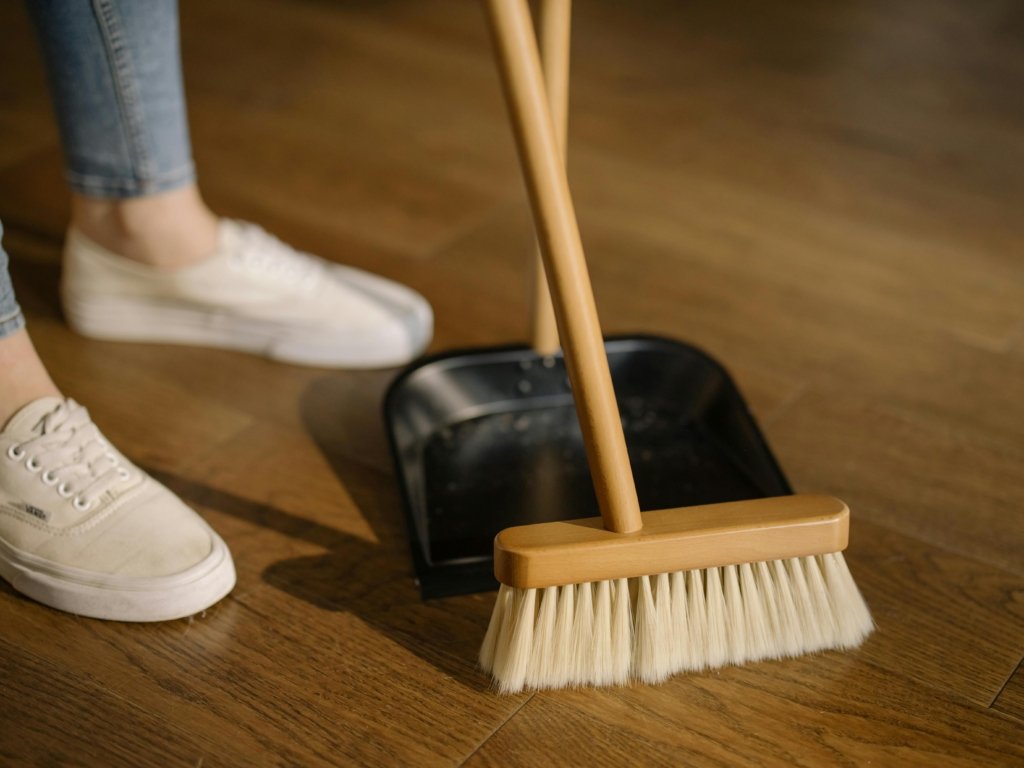
Regular Cleaning
Regular cleaning is the linchpin of maintaining a clean and hygienic space for your pet. It’s important to maintain your pet’s health and hygiene while keeping your home tidy, so establishing a consistent cleaning schedule for your pet is crucial. Let’s explore the importance of regular cleaning and break down the tasks involved:
Scooping and Cleaning Daily:
- Establish a daily routine for scooping litter boxes or cleaning up outdoor waste.
- Promptly remove any leftover food to prevent pests and maintain a fresh environment.
- Consistent daily cleaning prevents the accumulation of waste, minimizing odors and the risk of bacterial growth.
Cleaning Food and Water Bowls:
- Wash your pet’s food and water bowls regularly, ideally daily.
- Use pet-friendly dish soap and hot water to eliminate bacteria and food residue.
- It is crucial to clean regularly to prevent the proliferation of harmful bacteria and to guarantee that your pet’s meals are prepared in a clean environment.
Washing Bedding:
- Wash your pet’s bedding regularly, following the manufacturer’s guidelines.
- Use a pet-safe detergent and hot water to remove dirt, hair, and allergens.
- Clean bedding promotes a comfortable and hygienic sleeping environment, promoting your pet’s health and well-being.
Preventing Odor and Bacteria Buildup:
- Regular cleaning is a powerful tool in preventing unpleasant odors and harmful bacteria.
- By staying proactive, you reduce the risk of respiratory issues and maintain a fresh-smelling home.
- Implementing a routine also allows you to identify and address any potential health concerns promptly.
Maintaining a healthy environment for you and your furry friend is crucial, and keeping your home clean is vital. Dirt, bacteria, and odors can accumulate quickly, so regular cleaning is essential. Investing time in cleaning can prevent health issues for you and your pet and promote a harmonious living space.
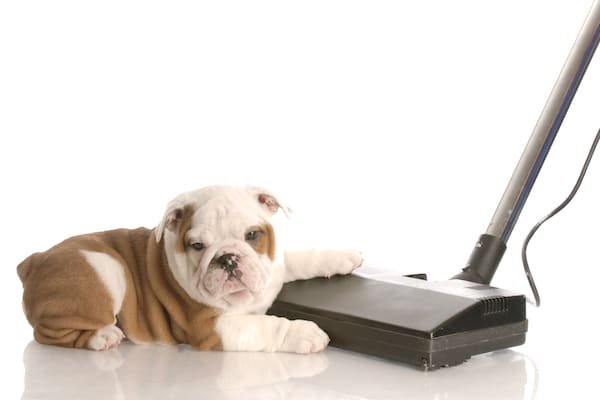
Vacuum and Sweep
While our pets bring boundless joy into our lives, they also have a knack for leaving a trail of hair and debris in their wake. It is essential to keep up with regular vacuuming and sweeping to manage the inevitable pet hair and debris. Let’s delve into the significance of these tasks and explore practical strategies to keep pet areas spotless.
Invest in Pet-Friendly Cleaning Tools:
- Choose a vacuum cleaner designed for pet owners, with features like powerful suction, specialized pet hair attachments, and HEPA filters.
- Opt for brooms or sweepers with electrostatic or rubber bristles that effectively capture pet hair and dust.
- Investing in an air purifier with a HEPA filter is highly recommended. This type of cleaner effectively captures pet dander and other microscopic particles in the air, helping maintain the quality of indoor air and keeping it cleaner and healthier
Establish a Routine:
- Make vacuuming and sweeping a regular part of your cleaning routine.
- Frequency depends on your pet’s shedding patterns and the type of flooring in your pet’s areas.
- High-traffic zones may require more frequent attention to prevent the buildup of hair and dirt.
Use Pet Hair Removers:
- Pet hair removers, such as lint rollers and sticky brushes, can be used on furniture, carpets, and clothing to remove pet hair.
- These tools are practical at quickly lifting pet hair, making them essential for maintaining a hair-free environment.
Spot Cleaning:
- Address spills and messes promptly to prevent stains and odors.
- Keep pet-friendly cleaning wipes or a damp cloth on hand for quick spot cleaning of surfaces and floors.
Pet Hair-Friendly Flooring:
- Consider pet-friendly flooring options that are easy to clean and resistant to pet hair accumulation.
- Hardwood, laminate, or tile floors are generally more forgiving than carpets regarding pet hair.
Regular Carpet Cleaning:
- If you have carpets, schedule regular deep cleaning sessions to remove embedded pet hair and odors.
- Use pet-safe carpet cleaners and consider professional carpet cleaning services for a thorough and effective cleanup.
Grooming Maintenance:
- Regularly brushing your pet’s coat can help prevent excessive shedding around the house by removing loose hair.
Regular vacuuming and sweeping contribute to a visually appealing environment and play a crucial role in creating a healthy and comfortable space for you and your furry companion.
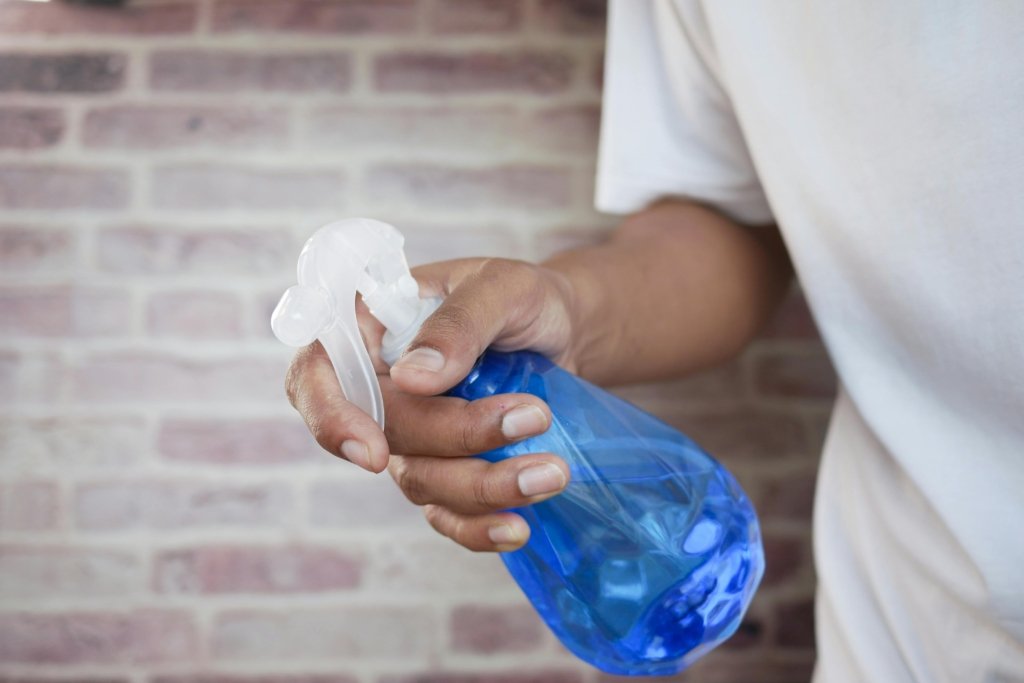
Use Pet-Friendly Cleaning Products
When cleaning your pet’s living spaces, the choice of cleaning products plays a pivotal role in ensuring their health and safety. Opting for pet-friendly cleaning products is not just a matter of preference; it’s a conscious decision that safeguards your furry friend from potential harm. Let’s delve into the significance of using pet-friendly cleaning products and explore practical tips for a healthier cleaning routine:
Avoiding Harsh Chemicals:
- Cleaning products that are commonly used can have chemicals that harm pets.
- Opt for natural and non-toxic cleaners free from harmful substances like ammonia, bleach, and phthalates.
- By avoiding these harsh chemicals, you can reduce your pet’s risk of respiratory issues, skin irritation, and other health concerns.
Choosing Pet-Safe Formulas:
- Look for cleaning products labeled explicitly as pet-safe or pet-friendly.
- These products aim to be kind to your pet’s delicate skin and respiratory system.
- Pet-friendly cleaners frequently incorporate natural ingredients like vinegar, baking soda, and plant-based extracts as essential components.
Ensuring Environmental Safety:
- Consider the environmental impact of your cleaning products.
- Eco-friendly and biodegradable options are safer for your pet and contribute to a healthier planet.
- Opting for items with less packaging or selecting manufactured ones using recycled materials is a great way to decrease your environmental impact.
Read Labels Thoroughly:
- Take the time to read product labels carefully.
- Be cautious of hidden ingredients that might be harmful to pets.
- Look for certifications or endorsements from reputable organizations that verify the product’s pet-friendliness.
DIY Pet-Safe Cleaners:
- Create your pet-friendly cleaning solutions using everyday household items.
- Vinegar diluted with water makes an excellent all-purpose cleaner, and baking soda can help neutralize odors.
- DIY cleaners are cost-effective and customizable, ensuring you have complete control over the ingredients.
By prioritizing pet-friendly cleaning products, you maintain a clean living space and actively contribute to your pet’s well-being. These products offer a safer alternative to conventional cleaners, reducing the risk of accidental exposure to harmful substances. Embracing a pet-safe cleaning routine aligns with a holistic approach to pet care, ensuring a healthy and happy environment for your beloved furry friend.
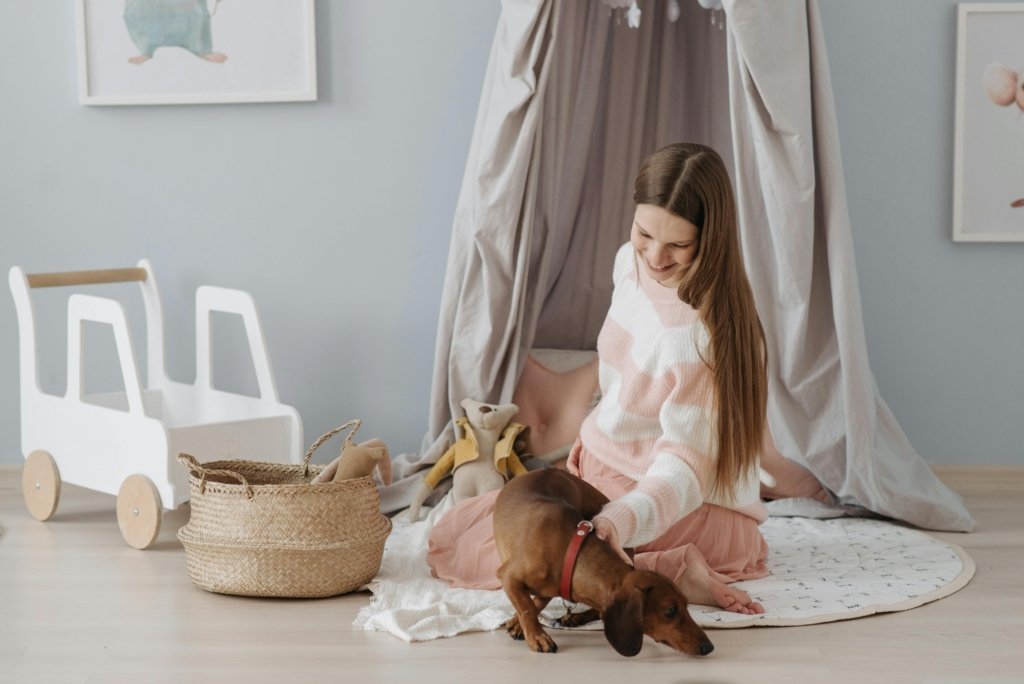
Organize Pet Supplies
An organized space is a clean space. Keep your pet’s supplies – toys, grooming tools, leashes – organized and easily accessible. Utilize storage bins or baskets to neatly store items and prevent clutter. Regularly review your pet’s belongings, discarding old or damaged items to keep the space tidy. Let’s explore the significance of keeping pet supplies in order and practical tips for achieving an organized and clutter-free environment:
Designated Storage Spaces:
- Assign specific storage areas for pet supplies, such as toys, grooming tools, leashes, and feeding accessories.
- Storage bins, baskets, or pet-friendly cabinets are used to keep items neatly organized.
- Clearly labeled containers make it easy to locate and access necessary supplies.
Regular Inventory Check:
- Regularly check your pet’s supplies to ensure everything is in good condition.
- Discard damaged or worn-out items promptly.
- This practice helps maintain a clutter-free space and ensures your pet’s belongings are safe and functional.
Rotate Toys and Accessories:
- Having the same toys for a long time can lead to pet boredom.
- Rotate your pet’s toys and accessories regularly to keep them engaged and prevent clutter.
- This also allows you to assess the condition of toys and replace any that may pose a safety risk.
Grooming Station:
- Dedicate a specific area for grooming tools and supplies.
- Use a grooming caddy or basket to keep brushes, nail clippers, and other essentials in one place.
- This setup makes grooming sessions more efficient and helps maintain a clean and organized space.
Prevent Clutter:
- Resist the temptation to accumulate too many toys or accessories.
- Prioritize quality over quantity, choosing durable, safe, and suitable items for your pet’s size and preferences.
- Regularly assess and declutter your pet’s belongings to prevent an overwhelming and disorderly space.
Create a Pet Station:
- Designate a specific area in your home as a “pet station.”
- This can include a designated corner with storage for supplies, a cozy bed, and a tiny shelf for treats.
- A centralized pet station makes it easy to keep everything organized and accessible.
Organizing your pet’s supplies contributes to your home’s cleanliness and creates a more comfortable and stress-free environment for your furry companion. An organized pet area fosters a sense of order and calmness, benefiting you and your beloved pet.
Incorporating these suggestions into your daily routine can help you maintain a hygienic, well-ordered, and safe environment for you and your pet. Regular upkeep not only boosts the cleanliness of your living space but also promotes your beloved animal’s overall health and happiness. Ultimately, a content and healthy pet translates to a peaceful and blissful home.




